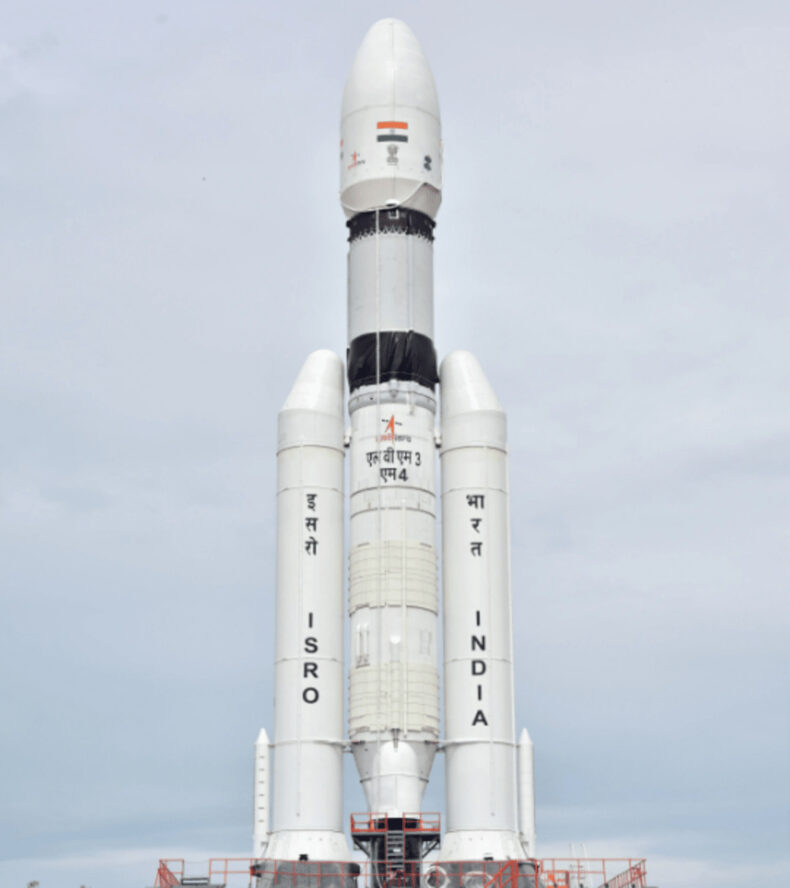As the Chandrayaan 3 Mission will be the first mission to set foot on the lunar south pole, the ISRO mission may go down in history. If everything goes according to plan, India may become only the third nation to make a gentle lunar landing.
The Chandrayaan-3 mission of the Indian Space Research Organisation (ISRO), which set out on its 40-day journey from Sriharikota’s Satish Dhawan Space Center, is now getting ready for the automatic landing sequence. The Vikram lander is expected to safely touch down on the moon on August 23 at 6:04 PM IST.
Table of Contents:
Aim of Chandrayaan 3 Mission:
The Chandrayaan-3 mission is a successor to the 2019 Chandrayaan-2 mission, which ended in a lunar surface crash with the Vikram lander.
- The mission’s principal aim is to demonstrate the space agency’s ability to carry out a soft landing on the Moon.
- Besides, it aims to measure the density of near-surface plasma (ions and electrons) and how it changes over time.
- It also aims to measure the thermal characteristics of the lunar surface close to the poles, the seismicity of the area surrounding the landing site, and the composition of the lunar crust and mantle.
- Moreover, it wants to determine the elemental composition of lunar soil and rocks at the lunar landing site, deduce the chemical composition, and infer mineralogical composition to advance our understanding of the lunar surface.
If the mission is successful, India will become a member of a select group of nations that have accomplished a soft landing on the moon. The club currently has three members: China, the Soviet Union, and the United States. With the Luna-25 mission, Russia launched its first attempt to set foot on the Moon since 1976 (when it was a part of the Soviet Union).
Instruments on board Chandrayaan 3:
Lander payloads include the Langmuir Probe, Chandra’s Surface Thermophysical Experiment, Instrument for Lunar Seismic Activity, and Chandra’s Surface Thermophysical Experiment, which measures thermal conductivity and temperature. Additionally, the American Space Agency has also provided a passive Laser Retroreflector Array for the mission.
For determining the elemental composition close to the landing site, the rovers’ payloads include the Alpha Particle X-ray Spectrometer (APXS) and Laser-Induced Breakdown Spectroscopy (LIBS).
Chandrayaan 3 vs. Luna 25:
- According to the National Aeronautics and Space Administration (NASA), the goal of the Luna 25 mission is to learn more about the composition of the lunar polar regolith (surface material) and the plasma and dust elements that make up the lunar polar exosphere. On the other hand, The primary objectives of Chandrayaan-3 are to demonstrate a safe and secure lunar surface landing, a lunar rover on the move, and in-situ scientific experimentation.
- Also, due to its dependence on solar power, which requires sunshine to operate, the instruments aboard Chandrayaan-3 have a short operating lifespan, limited to one lunar day or 14 Earth days. In contrast, there are no such limitations for Luna 25. It uses solar energy as well, but it has an onboard generator to keep its instruments warm and powered up throughout the lunar night. Because the mission will last a year, the decision of the landing date is not influenced by the amount of lunar sunshine.
ISRO Ready to Initiate the Automatic Landing Sequence:
According to an ISRO post on X, Chandrayaan-3’s Automatic Landing Sequence (ALS) will begin when the lander module arrives at the predetermined site at 5.44 PM IST today.
Final Phases of Chandrayaan 3:
There are four phases that make up the final moments of the Chandrayaan-3 mission before landing, also known as the “15 minutes of terror”.
Rough braking phase:
This phase requires reducing the lander’s horizontal velocity from about 6,000 km/h to close to zero for the soft landing.
Attitude holding phase:
In this phase, the lander will tilt from a horizontal to a vertical position while traveling a distance of 3.48 kilometers at a height of around 7.43 kilometers above the Moon’s surface.
Fine Braking Phase:
It is during this fine-breaking phase, which lasts around 175 seconds, that the lander will move approximately 28.52 kilometers horizontally to the landing spot while lowering its altitude by almost 1 kilometer. We must remember that it was between the Attitude hold and the fine-breaking stages, that Chandrayaan-2 lost control in 2019.
Terminal Descent:
The vertical lander should now descend to the Moon’s surface in what is known as the terminal descent.
Conclusion:
The mission demonstrates ISRO’s desire to push the boundaries of knowledge and advance our understanding of the lunar surface. Besides advancing our quest for knowledge and space exploration, it will serve as a symbol of India’s scientific excellence. Finally, It generates hope and paves the way for future lunar missions.













